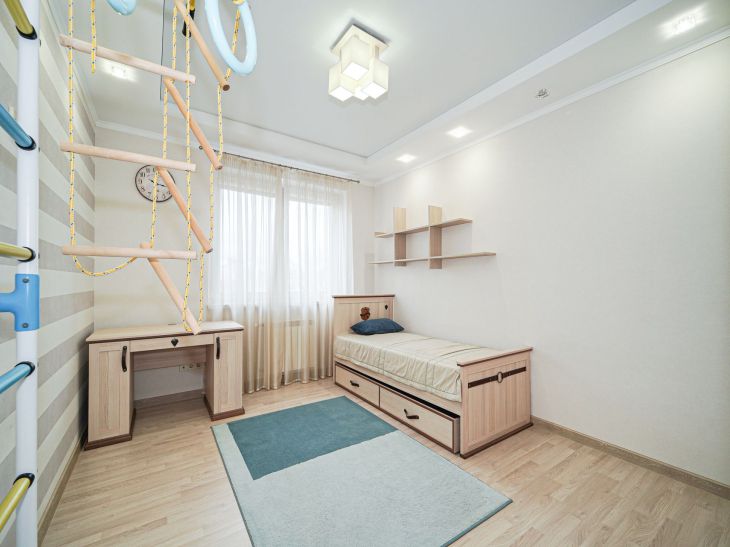Furnishing a children's room in a small apartment is not an easy task for parents.
First of all, you need to use every square centimeter of space as rationally as possible.
Experts recommend getting rid of unnecessary furniture and decor, leaving only the most necessary, says Yulia Tychino .
First, determine which zones are essential to have in a child's room. This is a place for sleeping, playing, studying, and storing toys. If the layout allows, divide the room into conditional zones using color, lighting, or furniture.
For sleeping, a pull-out orthopedic mattress or a bunk bed is suitable.

The latter option saves space and allows you to allocate space for a play area. However, over time you will have to buy a second single bed.
It is better to place the place for games and activities near the window so that there is access to daylight. The table can be placed against the wall, and light poufs can be used instead of chairs. They are easily removed when you need to free up space for games.
Open shelves, baskets, and boxes on wheels are suitable for storing toys. This will allow you to quickly find the thing you need and clear the floor if necessary.
Place shelves on the wall above the table, bed, in the corner. This way, toys will be within the child's reach.
Ditch bulky furniture in favor of multifunctional pieces.
For example, a bed with drawers for linen, a table-shelf, a sofa with a compartment for toys. Use the space under the bed, niches, window sills for storage.
When choosing furniture and decor, give preference to mobile, transformable structures.
A chair-bed, a screen on wheels that can be used as a table. In a small children's room, things that are easy to move and put away when necessary are valued.
The color scheme should be as neutral as possible: white, beige, gray, soft pastel colors.
Add bright colors in the details: pillows, rug, blanket. This way the design will look light and not overloaded.
With proper planning, a small children's room can be organized into many different functional zones.
Be sure to set aside space for reading and privacy. A small corner with a child's chair, ottoman and a shelf for books will become your child's favorite place.
Fence off a small niche with a screen and set up your own "secret house" for games. Hang garlands, place toy furniture. Such a zone will stimulate children's imagination and desire for privacy.
Set aside a separate place for creative activities. A table, boxes with craft materials, an easel for drawing. Everything should be easily accessible and not take up unnecessary space.
Don't be afraid to experiment with space. Make one of the walls magnetic so your child can attach his or her drawings and photos. Turn the doors of a closet into a chalkboard or marker board for creativity.
The main thing in a small children's room is the convenience and functionality of each detail. Transform, change, add new elements as the child grows.
And then your child’s favorite place will grow with him, remaining just as cozy and comfortable.
Earlier, the expert told how to make a kitchen from the “cover”.









